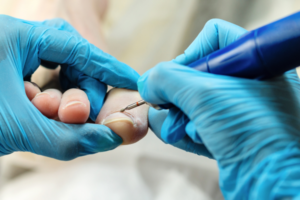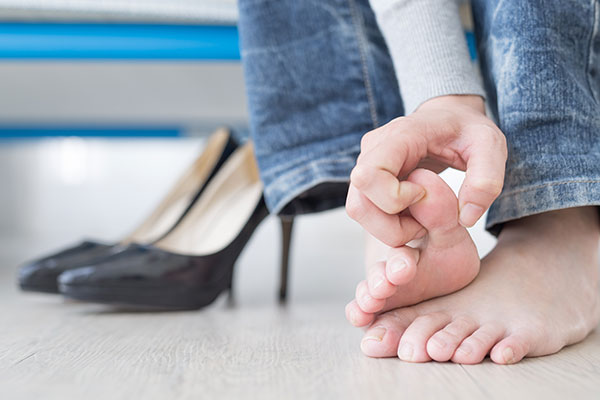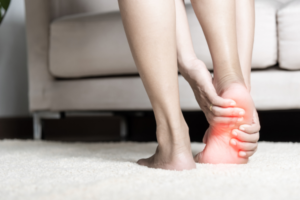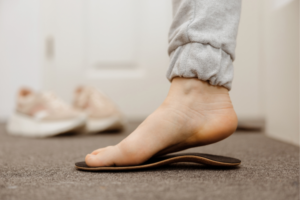
What is Involved in Nail Surgery?
A common concern we hear is that Nail surgery is scary and extremely painful. I’m here to tell you that this is not the case! Keep reading to find out more..

Do you have a nasty spot on your foot that’s often painful and bothering you? It could be a wart or a corn! Both look very similar but it’s important to distinguish one from another so that proper treatment can be implemented. If not, the issue can linger on.
What is a corn?

A corn is a lesion of hard skin on the foot that results from abnormal areas of pressure. It is a musculoskeletal issue that results from abnormal foot mechanics or wearing tight footwear. For example, it is common to see a corn arise on the top of your pinkie toe as a result of wearing tight shoes, commonly seen in ladies wearing high heels. It is also common to see a corn arise on the balls of our feet. The location of this corn can come up for various reasons but commonly it occurs due to abnormal foot mechanics.
What is a wart?

A wart is also a lesion of hard skin on the foot, however, it is not musculoskeletal in origin like a corn. A wart is a virus, like a cold sore, and arises due to contact with another person who has a wart, or being in an environment where warts may linger, such as public showers or the beach. As a result, it does not often occur in the same spots a corn would come up. It is common to see warts directly on your heel or in between your toes, even though you may be wearing suitable footwear. Furthermore, a wart does not have the same appearance as a corn. A wart has its own smaller blood supply that presents as black or red dots, whereas corns are often uniform with the skin and do not have their own blood supply.
How can you test?
The squeeze test! Gently squeeze the effected the area and if a sharp pain arises it is most likely a wart. You can also see the black dots on the surface of the skin in a wart. If the squeeze isn’t painful, press on the surface of the affected area and if its painful, it could possibly be a corn.
What can we initially do about these?
The first recommended treatment is to identify exactly what the lesion is. For corns, a change of footwear can be all that’s required to offload the region so that it is no longer painful. At the same time, your local podiatrist can also remove the corn for you and also offload the area that been under pressure. Corn pads from the chemist mask the lesion and do not get rid of them, despite what its packaging says. By masking the lesion, it makes it difficult to determine exactly what it is, making the issue last longer. As a result, we do not recommend that corn pads should be used at any stage throughout treatment.
If you feel the lesion is a wart, it is best to see your podiatrist and get the wart treated. Chemist remedies more often than not cause more damage to the surrounding tissue and do not treat the problem. Often warts initial start because the immune system is low. Boost your immune system with some Vitamin C and Probiotics to help with absorption of nutrients.
Corns and warts are lesions that can linger on for a while if they are not treated properly. If you are having these kinds of issues and home treatment has not helped the lesion resolve, let the team at SOLE – LUTION PODIATRY help you. You can reach us on 02 9569 5145
Luke Sassine
Sole-Lution Podiatry

A common concern we hear is that Nail surgery is scary and extremely painful. I’m here to tell you that this is not the case! Keep reading to find out more..

Heel pain is one of the most common complaints that we hear in the clinic. Regardless of what it is caused by…

Ask any podiatrist and they will tell you how often they get asked by their patients “Do I need custom orthotics”? The answer is not as simple as most people think…